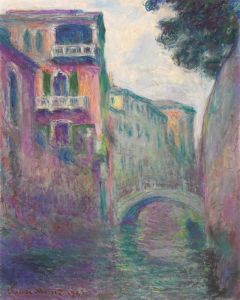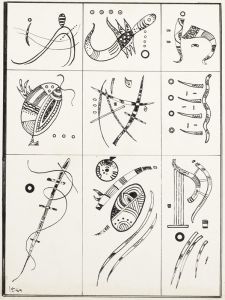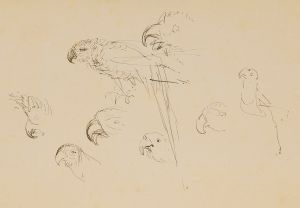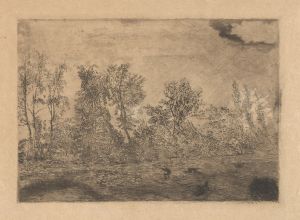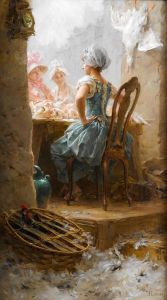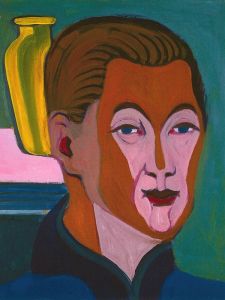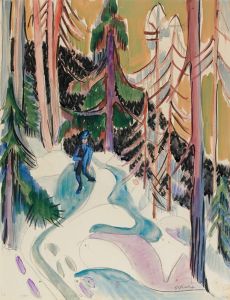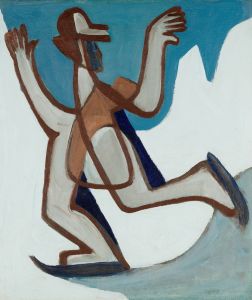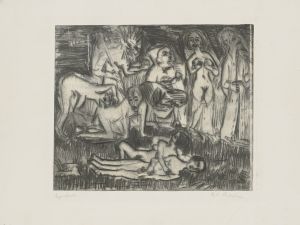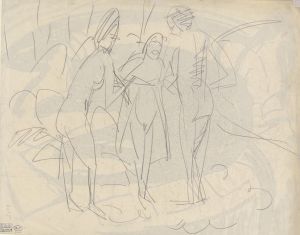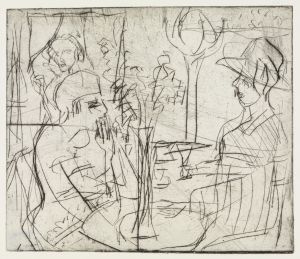
Auf- und Absteigende in der Landschaft
A hand-painted replica of Ernst Ludwig Kirchner’s masterpiece Auf- und Absteigende in der Landschaft, meticulously crafted by professional artists to capture the true essence of the original. Each piece is created with museum-quality canvas and rare mineral pigments, carefully painted by experienced artists with delicate brushstrokes and rich, layered colors to perfectly recreate the texture of the original artwork. Unlike machine-printed reproductions, this hand-painted version brings the painting to life, infused with the artist’s emotions and skill in every stroke. Whether for personal collection or home decoration, it instantly elevates the artistic atmosphere of any space.
Ernst Ludwig Kirchner's painting Auf- und Absteigende in der Landschaft (translated as Ascending and Descending in the Landscape) is a work by the prominent German Expressionist artist, who was a founding member of the influential art movement Die Brücke (The Bridge). Kirchner, known for his bold use of color, dynamic compositions, and emotional intensity, created this piece during a period when he was deeply engaged with exploring the relationship between humans and their environment.
The painting reflects Kirchner's characteristic style, which often combined distorted forms, vibrant colors, and a sense of movement to convey psychological depth and a connection to nature. In Auf- und Absteigende in der Landschaft, the figures appear to be integrated into the surrounding landscape, a recurring theme in Kirchner's work that emphasizes the unity between humanity and the natural world. This approach aligns with the broader goals of Die Brücke, which sought to break away from academic traditions and embrace a more primal, expressive form of art.
Kirchner's works from this period often depict figures in motion, set against dramatic, stylized landscapes. The title of the painting suggests a dynamic interaction between the figures and their environment, with the terms "ascending" and "descending" possibly alluding to movement, change, or the rhythm of life. The landscape itself is rendered in a way that blurs the boundaries between the human and natural elements, a hallmark of Kirchner's artistic vision.
The exact date of creation for Auf- und Absteigende in der Landschaft is not specified in available records, but it likely falls within Kirchner's mature period, when he was living and working in Switzerland after moving there in 1917. This relocation marked a significant shift in his life and art, as he sought solace in the Swiss Alps and found inspiration in the surrounding landscapes. His works from this time often reflect a more introspective and harmonious relationship with nature compared to his earlier, more urban-focused pieces.
As with many of Kirchner's paintings, Auf- und Absteigende in der Landschaft demonstrates his mastery of color and form, as well as his ability to convey emotion and movement. The painting is an example of his commitment to pushing the boundaries of traditional art and creating works that resonate on both a visual and emotional level. Today, Kirchner is celebrated as one of the leading figures of German Expressionism, and his works continue to be studied and admired for their innovative approach and profound impact on modern art.






